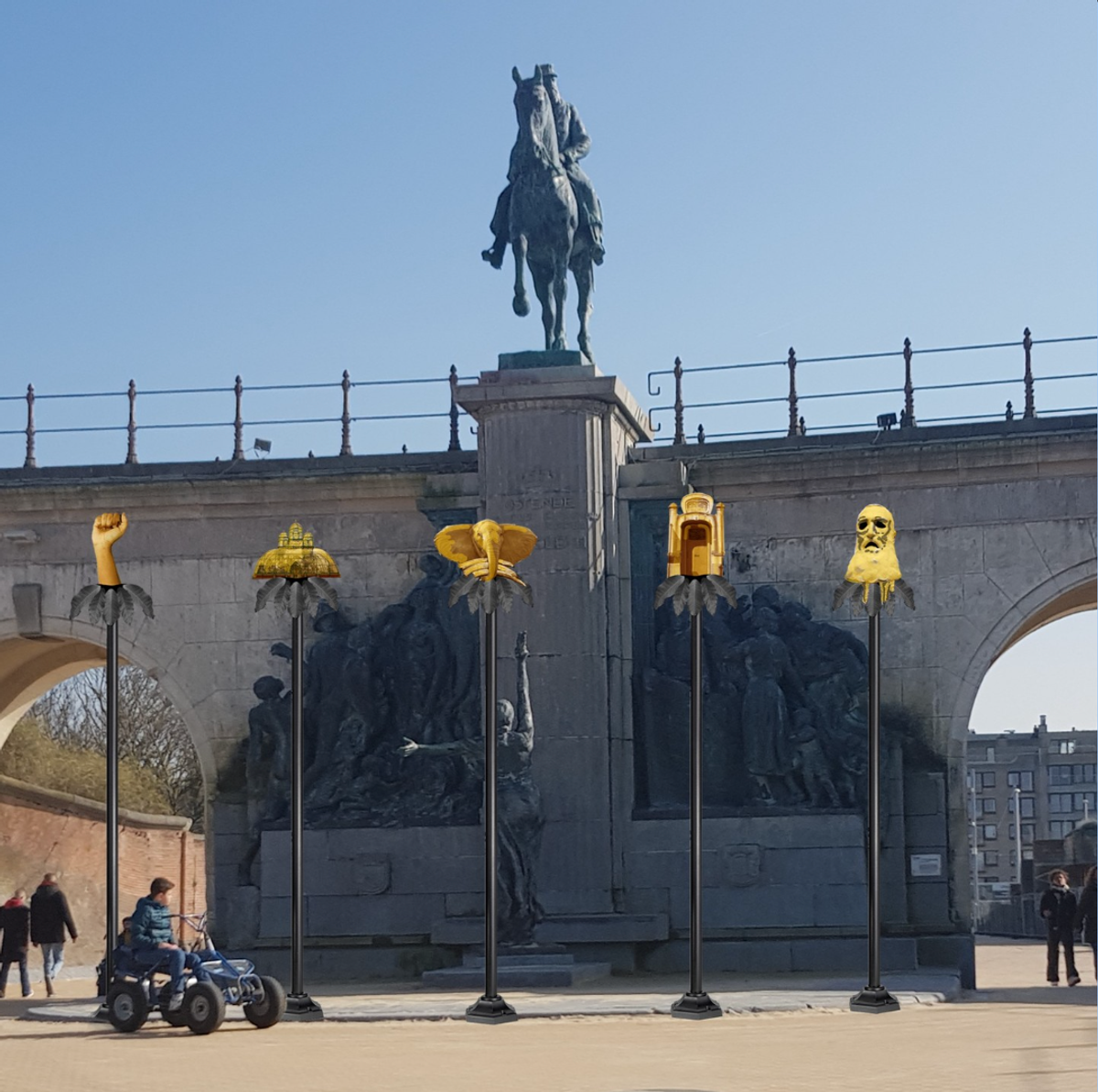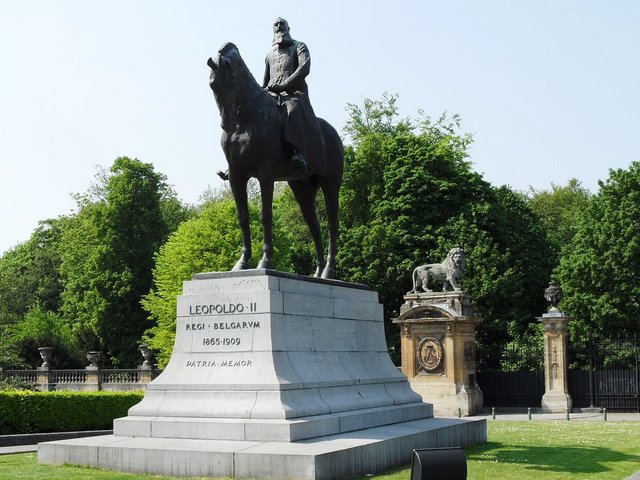The British-Guyanese artist Hew Locke will unveil a series of new works at the site of a controversial statue in Ostend depicting the late Belgium monarch Leopold II. Locke’s pieces will “disrupt” the historic equestrian monument, says the artist, who won the commission from the City of Ostend.
The 1931 statue of Leopold II, located on the city seafront, depicts him being thanked by grateful Congolese subjects for saving them from Arab slavers. It cannot be modified under law, so instead for Locke’s intervention “five masts will be placed in front of the statue,” the alderwoman (city councillor) Silke Beirens told the Flemish public broadcaster VRT. “On each mast, there will be a symbol linked to colonial history.” The symbols include a clenched fist and, according to the Telegraph, Leopold II’s severed head.
Leopold II, Belgium’s longest reigning monarch from 1865 to 1909, is notorious for instigating a brutal colonial regime in what is now the Democratic Republic of the Congo. By some estimates around 10 million Congolese are understood to have died under his regime as a result of famine, disease and violence.
Locke writes on Instagram that his proposed work “aims to disrupt the view of their [the City of Ostend’s] triumphalist statue of King Leopold II”. He adds: “[Leopold II’s] administration was characterised by systematic brutality and atrocities, including forced labour, torture, murder, kidnapping, and the amputation of the hands of men, women, and children when the quotas were not met.” The work will be unveiled late 2025 according to Belgian press reports.
In 2022, the Ostend statue was covered in red paint by a protest group known as The Naughty Ostender. Two years earlier, a sculpture of Leopold II in the city of Antwerp was set on fire, before authorities took it down; the same year the University of Mons removed a bust of the late king.
Locke has previously reconfigured imperialist symbols and figures. In 2022 Locke reimagined a controversial Queen Victoria statue in Birmingham, UK (Foreign Exchange). In 2006 he doctored a photograph of the statue of Edward Colston in Bristol, UK, as part of his Restoration series so that it was engulfed in a cascade of gaudy decorations and jewellery, including skulls, coins and slave ships.
Locke has also unpicked colonialism for a British Museum exhibition (what have we here, until 9 February 2025), addressing questions around sovereignty, power and nationhood. “I’ve always been interested in the ways objects are interpreted through display in museums. What story has been distilled? How does it relate to the present? How can this telling be questioned, disrupted, or complicated?” Locke says in a statement.




